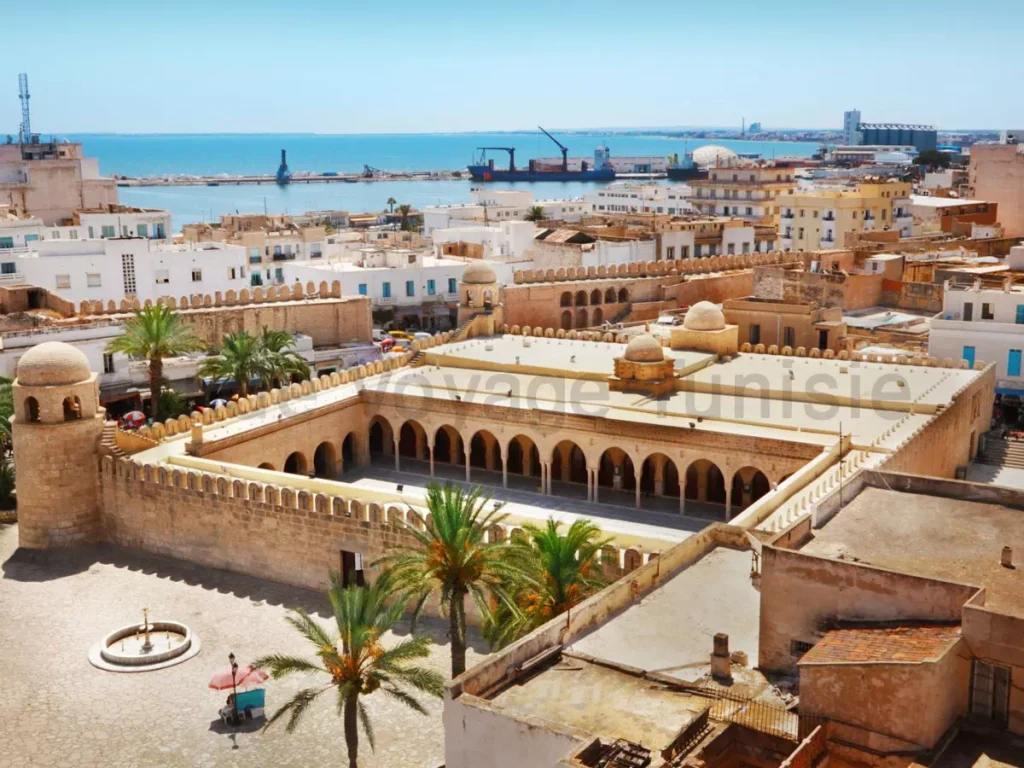The medina of Sousse
The medina of Sousse, nicknamed the Pearl of the Sahel, one of the big cities of Tunisia, very dynamic, the city of Sousse has many assets: heritage, crafts, beautiful beaches and large hotels. To discover Sousse, it makes sense to start with its medina: it is at the heart of the city and its history. Thus, the medina has been listed as a UNESCO World Heritage Site since 1988. Complete ramparts surrounding the medina, an exemplary casbah and ribat, lively and colorful souks: so many good reasons to explore this rich heritage.
Located in the Tunisian Sahel, the Medina of Sousse constitutes a harmonious archaeological complex that reflects Arabo-Muslim urbanism applied to a coastal town exposed through its history to piracy and dangers from the sea. With the Medina of Monastir, it constitutes the unique prototype of military coastal architecture of the first centuries of Islam that has been passed down to us. Several monuments of the medina bear witness to this robust, ascetic and imposing architecture, notably the Ribat, the Great Mosque, the Bou Ftata Mosque, the Kasbah and the ramparts. The Ribat, both a fort and a religious building, is an eminent example of this type of construction. The Medina also comprises juxtaposed dwellings divided into quarters that separate the winding alleys and narrow paths, a fast disappearing type of layout threatened by modern life and the evolution of architectural techniques. It also contains an ensemble of unique monuments dating from Aghlabid and Fatimid times, enabling study of the evolution of Islamic art in its first period.
Criterion (iii): With the Ribat, the Kasbah, ramparts, Bou Ftata Mosque and the Great Mosque, the Medina of Sousse bears exceptional witness to the civilization of the first centuries of the Hegira. The Medina was conceived according to a regular plan with its meridian axis running from Bab el Kabli to the ribat and the ancient interior port, and its east-west axis running from Bab el Jedid to Bab el Gharbi. It constitutes a precocious and interesting example of an Islamic city.
Criterion (iv): The most ancient and best conserved of all, the Ribat of Sousse, is an outstanding example of this type of construction, with its rectangular enclosure flanked with towers and turrets, pierced with a single gate on the south, an inner courtyard rising over two levels with thirty-five cells opening onto it, a mosque on the southern side of the first storey, with its south-east facing tower, added in 821, serving as both a minaret and watch tower, from where signals from the Ribat could be transmitted to Monastir.
Criterion (v): The Medina of Sousse constitutes an outstanding example of Arabo-Muslim and Mediterranean architecture that reflects a particular traditional way of life. This typology, which has become vulnerable through the impact of irreversible socio-economic changes and modern life, constitutes a precious heritage that must be safeguarded and protected.
A little history
The occupation of the region began with the Phoenicians (Hadrim) around the 11th century BC. Then the Carthaginians settled, replaced by the Romans (Hadrumète). The latter considerably developed agricultural production (notably olive oil) and port activity. In 439, the city was taken and destroyed by the Vandals (Hunericopolis). The Byzantine settle (Justinianopolis) in 535 and restore the city, including its port.
In 670, the Arabs, led by Oqba Ibn Nafi Al Fihri, besieged and took the city and called it Hadramout. Later, the city will take the name of Sousse, probably from a Berber word meaning “the city above the hill”. Most of the monuments visible today were built between 700 and 900 (Ribat, Great Mosque, Wall, Kasbah, etc.). Then competed by Tunis, Sousse retains its importance thanks to its port allowing the export of agricultural products from the region.
The medina of Sousse in pictures

